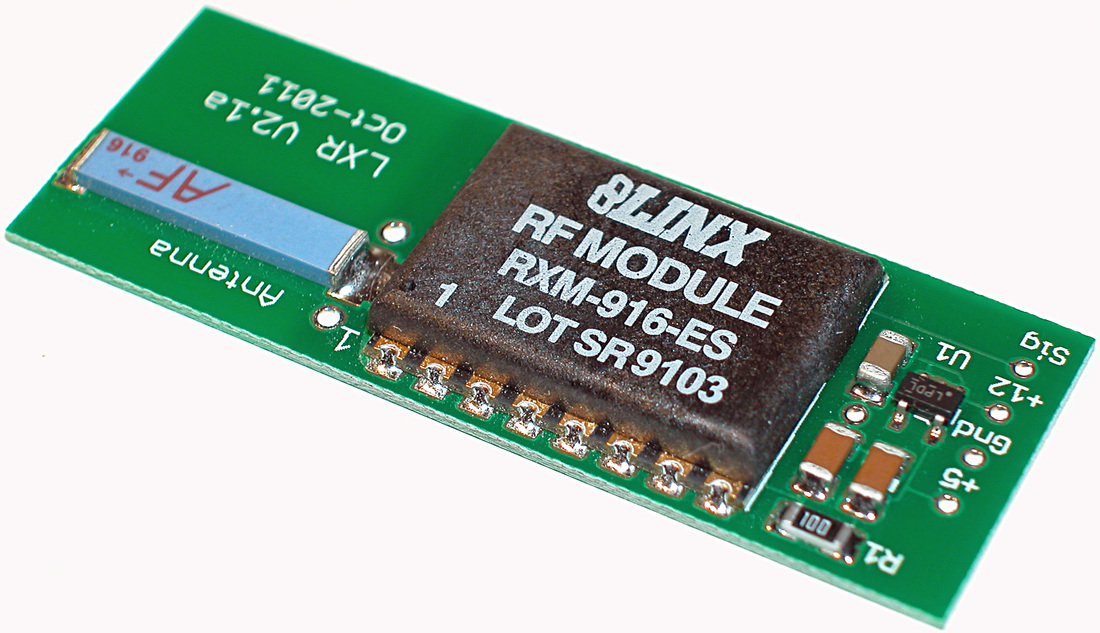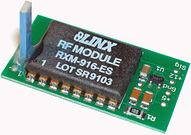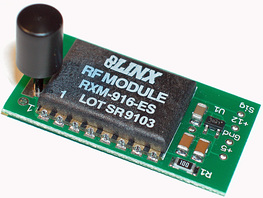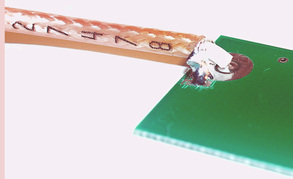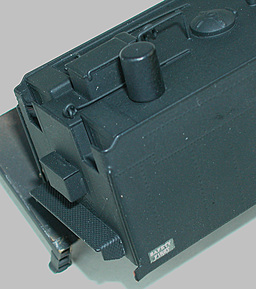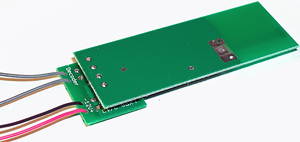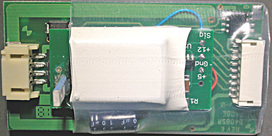I'll discuss two topics in this blog: radio antenna options and use of a DCC adapter.
Antenna Options
The S-CAB radio receiver is designed to be bundled with selected decoders to create a ready-to-install package following exactly the same installation instructions as a non-radio decoder of the same brand. How the antenna is mounted on the radio receiver circuit board affects radio reception, but loco installation space limitations sometimes require a less-than-ideal antenna mounting. These photos show three options using what is called a "chip" antenna.
Antenna orientation affects radio reception and reliable transmission distance deceases as the antenna becomes less effective. Informal tests using an S-CAB Throttle indicate reliable transmission distance of 30 to 50 feet with lengthwise and vertical antennas. Crosswise mounting produces the smallest package, but radio range is reduced to 15 feet. These tests were performed indoors where walls, metal ducting, electrical wiring, etc. interfere with radio propagation. Outdoor transmission distances can be 100 feet or more.
 Planar antenna
Planar antenna The planar antenna to the right, which looks like a tiny circuit board, performs well and is definitely superior to the cross-wise mounted chip antenna. It keeps the radio receiver assembly no thicker than what is required for the radio module (5/32") and overall length is 1.75" compared to 2" for the lengthwise chip antenna.
Precautions are required when locating radios inside metal enclosures, such as a brass loco tender or diesel loco metal body. S-CAB allows a number of antenna options to deal with this issue. For steam locos, the tender coal load is a convenient place to hide the antenna and vertical mounting of the chip antenna gives best reception.
| If there is no coal load, an oil-burner for example, the following may be an option depending how well it blends with other "clutter" atop the tender. The photo (right) shows a mounting on a large HO scale tender. | For all-metal diesel locos or steam locos with no workable tender space, the operator's cab is another option. but hang the antenna vertically so it's not flat against a metal surface. One modeler with a small steam loco replaced the metal cab roof with plastic and placed the antenna flush against the new plastic roof. Keep in mind however, antenna and radio receiver cannot be separated except by using coax cable. A bit of wire may work but transmission distance will be seriously reduced. |
However, a 3 inch length of wire makes a reasonable antenna, but it's difficult to prevent it tangling with other wires or laying against a metal surface when reassembling a loco. Use single stand wire, thick enough (20 to 24 AWG) so it's not too flexible and keep it insulated from any metal surfaces.
DCC Adapter
For modelers with obsolete or rarely used decoders, S-CAB radio receivers can be equipped with a "DCC adapter" which provides a DCC output identical to track DCC pick-up. When this output is connected to a decoder (instead of rail pick-up), the decoder is not aware that commands are communicated by radio instead of thru the track.
These photos show the DCC adapter mounted on the radio receiver. The grey wires connect to the right/left rail inputs of a decoder (polarity is not important). The adapter's red and black leads are positive and negative battery power connections.
Adapter and radio receiver can be separated, but four connecting wires are required.
Adapter and radio receiver can be separated, but four connecting wires are required.
The disadvantage of this arrangement is full power for the decoder must be provided by the adapter instead of connecting battery power directly to the decoder. DCC output from the adapter is limited to 1 amp maximum, which is adequate for most smaller scale locos.
